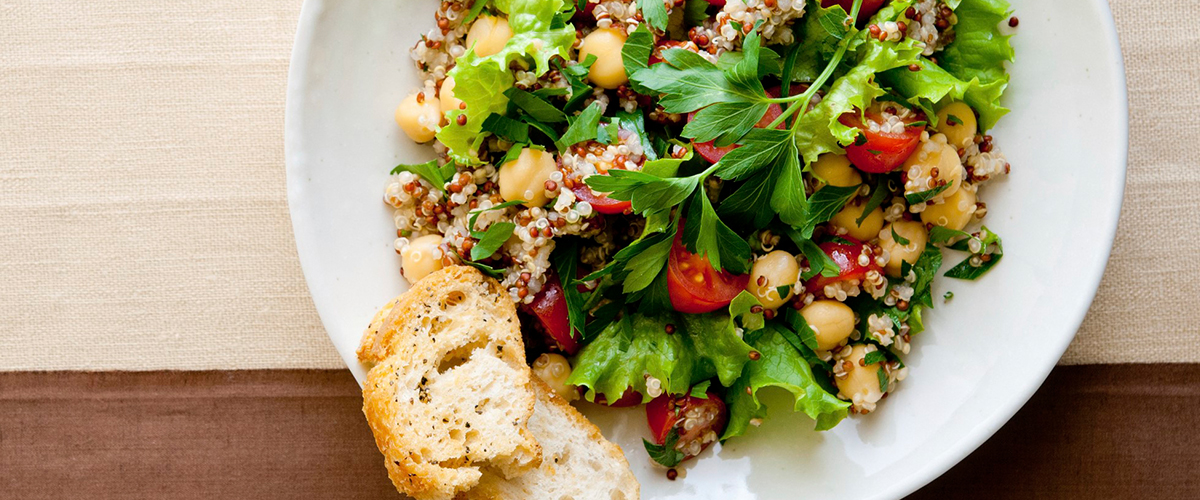A crisp salad can be quite refreshing… but it can also can be laden with unhealthy saturated fats and sodium when overloaded with bacon bits or creamy dressing. On the other hand, skimping with just a few lettuce leaves lightly splashed with low-cal vinaigrette won’t satisfy.
“One of the biggest mistakes I see people make at the salad bar is that they don’t include the right amounts or types of food, leaving them hungry an hour later and more likely to snack on other not-so-nutritious foods,” says Ashley Thomas, Aramark’s Southeast District Dietitian in Higher Education and nutrition blogger at The Fresh Beet Nutrition.
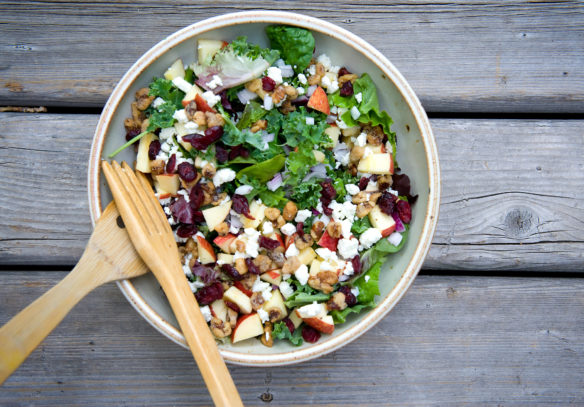
When faced with so many options at a salad bar, how can you create a balanced salad that is nutrient rich, delicious and satisfies your appetite? Follow these six steps from Thomas to build the perfect salad meal – every time.
Step #1: Start with a leafy base
Forgo light-colored lettuce, such as iceberg; instead, “fill your bowl with rich-colored greens or cabbage for bonus nutrition and flavor intrigue,” recommends Thomas.
Pick one:
- 2-3 cups dark leafy greens, like kale, spinach, arugula, or mustard greens
- 2-3 cups mixed greens, like mesclun or herb salad mix
- ½-1 cup shredded cabbage; mix with 1-2 cups of other greens
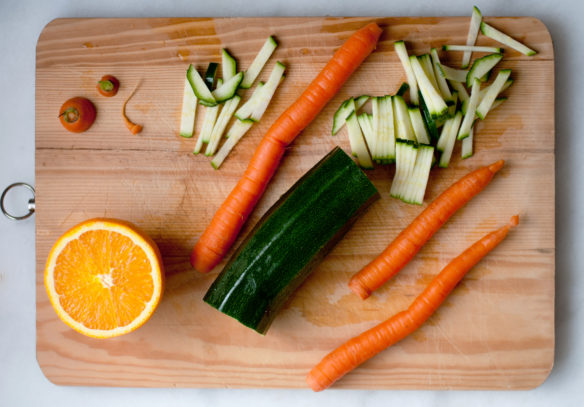
Step #2: Add color with produce
When it’s time to add toppings, load up on colorful fruits and veggies – raw, roasted and dried will do – for a sweet and savory flavor combo. “Sometimes I like to add fresh or dried fruit to my salad to give it a pop of flavor and with all that juicy sweetness, I don’t need as much salad dressing,” says Thomas.
Pick one or more:
- 1 cup seasonal non-starchy veggies, like broccoli, bell peppers, mushrooms, carrots, tomato, or cucumber
- 1/2 cup seasonal fruit, like berries, grapes, oranges, pears, or peaches
- 1/2 cup pico de gallo
- 1/4 cup high-flavor vegetables, like kimchi, pickle vegetables, olives, or onions
- 2 tablespoons dried fruit
- 1/4 avocado
Step #3: Punch up the protein
Don’t skimp on your salad by skipping protein; just forgo picks high in saturated fat, like fried chicken strips or steak. Most plant-based proteins combine fiber and protein which will leave you feeling satisfied longer.
Pick one:
- 1/2 cup beans or lentils
- 3 ounces tofu or tempeh
- 2 to 3 ounces grilled wild salmon, tuna, or chicken breast
- 2 boiled or poached eggs
- 1/4 cup shredded part-skim mozzarella or crumbled goat or feta cheese
Step #4: Go for whole grains
Keep out overly processed “white” grain foods, like fried croutons; keep in “good” carbs to provide sustained energy.
Pick one:
- 1/2 cup cooked quinoa or brown rice
- 1 whole grain bread roll or 1/2 whole grain pita
- 1 small corn or whole-wheat tortilla
- 1 ounce baked whole grain pita chips or baked tortilla chips
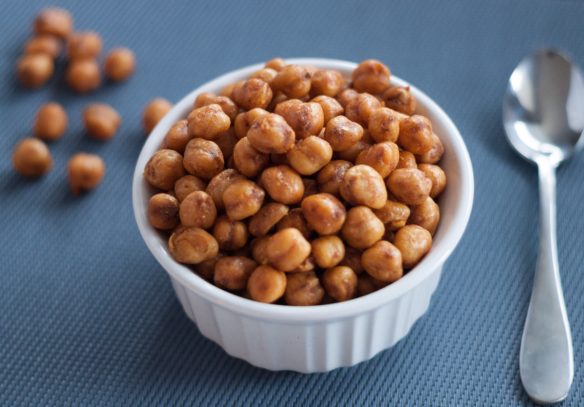
Step #5: Sprinkle on high-flavor, high-nutrition crunch
Steer clear of fried onions, chow mein noodles, and other fried salad toppers; instead, reach for real crunch by way of nuts, seeds, and baked legumes. “My personal favorite crunchy add-ons are roasted nuts and seeds, crunchy fruits like apples, or crushed, baked tortilla chips on Mexican-inspired salads, adds Thomas.
Pick one:
- 1/4 cup crispy baked edamame or chickpeas
- 2 tablespoons pistachios, almonds, walnuts, pecans, peanuts, or pine nuts
- 1 tablespoon sunflower, pumpkin, or sesame seeds
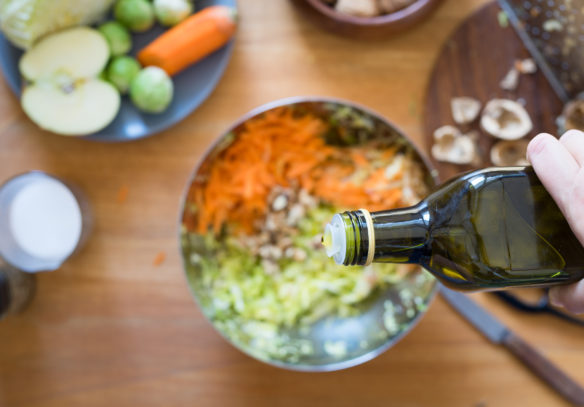
Step #6: Drizzle with a healthy vinaigrette
Rather than going too rich with ladles full of goopy dressing or too light with just a splash of vinegar, enjoy a simple vinaigrette that includes healthy fat to boost nutrient absorption. “Two of my personal favorites that I’ve created are: Honey Mustard Vinaigrette (honey + grainy mustard + olive oil + apple cider vinegar) and Asiago Peppercorn (plain yogurt + asiago cheese + garlic + lemon juice + scallion + salt and pepper).”
Pick one:
- 2 tablespoons balsamic vinaigrette or Italian vinaigrette
- 2 tablespoons DIY vinaigrette (1 tablespoon lemon juice, lime juice, or vinegar of choice plus 1 tablespoon oil of choice or tahini)
Now, you’re ready to hit the salad bar (or your well-stocked kitchen!) to create your own good-for-you salad meal. It’ll taste great, too!
Note: Since everyone’s health history and nutritional needs are so different, please make sure that you talk with your doctor and a registered dietitian to get advice about the diet and exercise plan that‘s right for you.
Note: Since everyone’s health history and nutritional needs are so different, please make sure that you talk with your doctor and a registered dietitian to get advice about the diet and exercise plan that‘s right for you.

